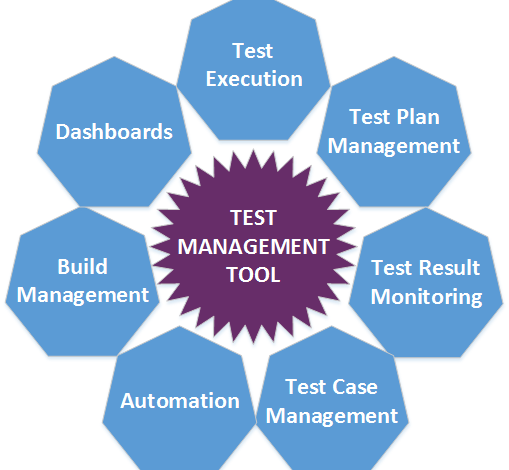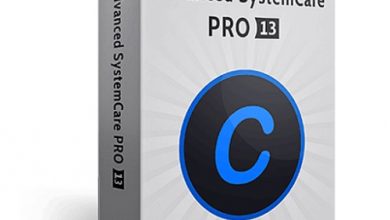A Detailed Guide to Choosing the Best Test Management Software

In this comprehensive guide, we are going to show you the key details that you need to know, and that will surely convince you to keep this as a trusted reference when you eventually start choosing best digital asset management software tools to use.
To kick-off, we’ll provide an introduction to test management and delve deeper into the subsequent procedures when selecting the best test management software. In that way, you’ll have an understanding of what it is, why you need it, what the essential elements and features are, and then what are the top test management tools you’ll find in the market.
What makes this tutorial even more exciting? You don’t have to have an intensive technical background to understand it. You can grasp the crucial points and apply them in your endeavor right away!
Introduction to Test Management
When choosing the best test management tool in the market, you might find yourself overwhelmed and often confused. That is why it matters to have critical attention when deciding your option. You should consider various factors at play, such as mobile support, expenses, productivity, and flexibility when selecting a tool.
It is also imperative to put in mind that all the processes or steps conducted in doing the software testing life cycle are referred to as Test Management.
In other words, Test Management allows you to boost test success to ensure a better quality of software. It does that by systematically organizing and controlling test procedures, automated testing projects, test assets, and artifacts for Manual processes.
That technically means that Test Management serves as the strategy of managing all the organizational aspects and phases of testing. It always involves two key factors, namely activities and the elements. Each comes with various specifications and variables.
Among the tasks and activities included in the Test Management are:
- Preparation of test case
- Planning of test execution
- Monitoring of test execution
- Reporting of the test result
- Analysis of test result
- Review of the testing activities and test result completeness
- Mobilizing the testers and testing team
- Organizing both internal and external relationships
- Creating documentation relevant to testing tasks
- Efforts estimation test
- Scheduling of test
- Measuring and monitoring of test cycles
- Test cases organization
- Test assets and artifacts’ management
What is a Test Management Tool?
A test management tool is a software that you can use to monitor the testing process, including how it is done/planned, provide a report regarding the status of QA activities, and systematically organize test artifacts/assets. Likewise, the tool is used to organize and monitor the software testing process. That applies to both the automated and manual setup.
In most cases, test management tools involve problem management, bug tracking, incident management, test ware management, test reporting, as well as test scheduling and monitoring. These tools also contain various modules needed to organize the varying stages of STLC.
That is why these tools are typically applied in support of manual testing, gathering execution data by implementing automated tests, and to create a requirement traceability matrix. Further, these tools are employed to provide information about detected bugs in the software and to handle different platforms and environments.
Why is There the Need for Test Management Tools?
Studies reveal that a software quality assurance in place drains more than 50 percent of a software’s total cost. For critical software, that percentage can be significantly higher. That is why it is imperative to leverage on a test management tool in your project or program. In that way, you can have proper control of the overall testing costs and, at the same time, improve your testing procedures.
Likewise, research shows that using a manual test management has different disadvantages which you can, fortunately, resolve via a test management tool.
Here are some points you need to take into account:
There is a need for any organization to utilize efficient and scalable test management software, especially with the increasingly complicated testing procedures.
Using these tools, an organization can have a clear overview of the overall health of the system under test (SUT), therefore, ensuring that all the different testing activities are well coordinated. At the same time, these help you keep the overall testing procedures on track.
These tools also help rationalize and reform the testing procedures or processes. In that way, an organization can have easy access to collaborative tools and data analysis, which would eventually foster efficient and effective communication across several project proponents.
Many of these tools come with requirements management capabilities to complement the given test case feature with such requirements.
To simplify all the testing procedures, a single application is used in tracking defects and project activities that are carried out.
In relation, there are a variety of test management tools you can avail of such as PractiTest which is among the popular options. To give you an idea of test management tools work, let’s cite it as an example and delve deeper on its fundamentals.
So here is how it works.
PractiTest provides comprehensive and digital-based test case management to guide you in organizing testing efforts. That in turn, allows you to generate real-time insights into testing activity.
By Using PractiTest, you can properly assess the status of each test done. With its dashboards and activity reports, you can monitor the progress of every test more easily. As you do that, you can refer to reports and metrics it provides to deliver updates regarding application quality.
Just like other test management tools, PractiTest comes with personalized to-do lists, filters, and email notifications. These are essential when assessing your team’s workload so you can accurately adjust tasks and resource allocation. That eventually leads to improved testing productivity.
Take note. The features presented are not solely offered by PractiTest as most other test management tools come with these benefits. That means you have a variety of options to choose from depending on your resource and business situation.
One important thing you should note. The test management tool you use should also be compatible with defect tracking and collaboration solutions such Gemini, Jira, etc. It should work well with test automation tools such as Ranorex Studio.
Open Source vs. Feature-Rich Commercial Tools
Before delving deeper into the detail of every tool, a common question in mind is:
Which type of tool should I search for – open source or commercial?
Some of the very few open-source choices are:
- Redmine
- Tarantula (applied on agile test management)
- QATraq
- TestLink
Commercial options include:
- QTest
- Test Collab
- HP Quality Center
- Zephyr
- PractiTest
- QMetry and TestFLO for JIRA
Let’s cite some of the differences between these tools in the following:
Open source tools can do multiple tasks properly and perform better with lesser tasks
Open source tools’ customization can take a lot of time and effort, but it does offer flexibility. That means you’ll need a robust technical admin team.
Open source tools add to the performance issues because of their slower pace compared to commercial tools. That is why they don’t make a good fit for more prominent organizations.
Open source tools lack support efficiency as well as robust user manuals and training.
Commercial tools provide interactive and easy to use interfaces.
The majority of business tools can properly integrate with another bug tracking, test management, and test automation tools. Nevertheless, they perform best when applied in the ground area for which they have been built in the first place.
The main downside of a commercial tool is its price. That is because you’ll have to pay higher for the license cost and the maintenance. Because of that, an organization needs to justify the expenses of employing a licensed test management suite.
Parameters While Selecting the Best Tool
When choosing a test management software, consider the following parameters.
1. Cost
When choosing a tool, make sure you always align the rate with your project budget. For more prominent organizations, a commercial tool usually makes up a good fit since it is easy to use and helps sustain the organization.
Following that, decide on how much you can allocate for the licensing cost. That should be based on the time duration for which you need to use the tool. A lot of commercial tools also offer a customized license, wherein you can only pay for the features and the period of usage that you choose from their package.
2. Productivity
It’s obvious, but the test management software you select should boost productivity.
Productivity should conform to the following parameters:
a) The Granularity of Test Information: The tool should provide comprehensive and useful information during the different levels of the testing procedures. Likewise, the report which the tool generates should be able to provide information on gaps or issues during the testing. In that way, you don’t have to spend time tracing and replicating the gap. Further, the tool should be able to record defects, log testing approaches, sustain test case versions, upload images/videos, connect user stories, and plan test execution.
b) Release Management Tracking: The tool should effectively monitor and continuously update the list of application modules being tested and released. Moreover, it should help prevent conflict with the requirements by providing a single repository that is agreeable among all the involved parties.
c) Support for Agile: With more and more projects resorting to the agile methodology, it makes sense to utilize a tool that supports it. That should consider essential elements like velocity charts, reports, sprints, user story creation, and scrum.
3. Integration with External Tools
To ensure a fast and easy testing process, the tool should work well or integrate appropriately with other tools for automation and bug tracking.
4. Mobile Support
To help in daily monitoring, the tool should offer a fully-featured version that replicates well with mobile devices.
5. Preferred Support Channel
A lot of us can get lost using a tool for the first time or when we are still in the stage of asking about it. That is why it helps to choose one with a sound support system, including a phone call, and a timely live chat.
Mandatory Features
Here are the features of a good test case management tool to consider:
- Facilitates planning, scheduling, and controlling
- Monitor capabilities
- Support reporting standards
- Organizes different artifacts and tests
- Logging execution information
- Represents the links between test assets
- Test relevant metrics generation
So, there you have it. Those are just some of the essential details you need to know when choosing a test management software. We hope that this guide helps you evaluate properly towards choosing the best one for your organization.
META DESCRIPTION
Looking for the most ideal test management tool which you can implement in your organization’s testing process? Here is a comprehensive guide to help you out, tackling all the essential info you need to consider.
ABOUT THE AUTHOR
Patrick Panuncillon has been a digital marketer specializing in Search Engine Optimization since 2007. He has been helping companies across various niches improve their online visibility and therefore, generate more leads and conversions.




